How to properly plant and grow cabbage seedlings at home
Cabbage is grown in almost every household plot. A good harvest of different types of this vegetable cannot be obtained without high-quality seedlings. Let's look at how to select and grow seeds, care for seedlings at home and prepare plants for transplanting into open ground.
Timing for planting cabbage seedlings
The timing of sowing cabbage for seedlings depends on the climatic conditions of the region and varieties. The seedlings are transferred to open ground when 3 pairs of true leaves are formed. This occurs when the seedlings reach 2 months.
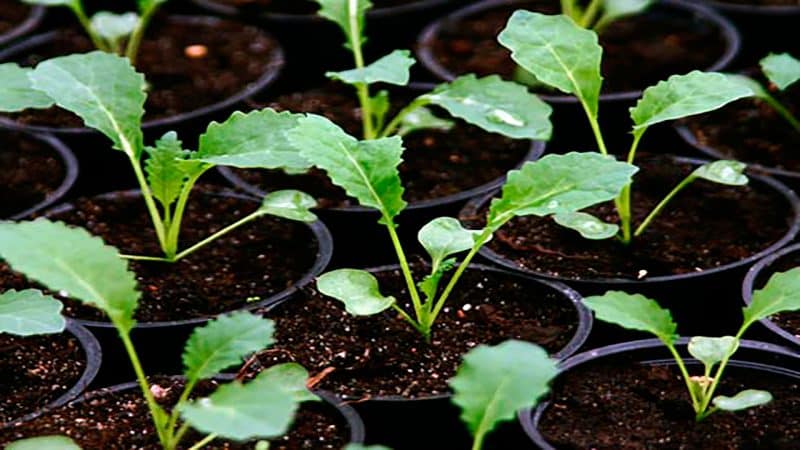 Accordingly, sowing begins 2–2.5 months before the expected date of planting on the site, when the temperature is not lower than +17°C.
Accordingly, sowing begins 2–2.5 months before the expected date of planting on the site, when the temperature is not lower than +17°C.
In the southern regions this is done at the beginning of March, in the central regions - at the beginning of April, in the Urals and Siberia - at the end of April.
Reference. Early-ripening varieties are sown in early March, mid-ripening and late-ripening varieties are planted in mid-April.
Preparatory stage
Before planting, seeds, containers and soil must be disinfected.
Seeds
Seeds purchased in stores do not require preparation at home, since they are already treated against infections and covered with a nutritious coating of green, red or blue.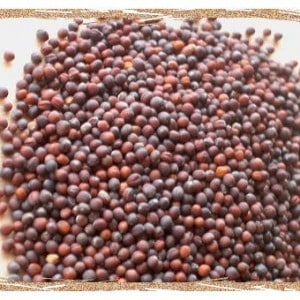
Unprocessed planting material collected from the harvest is disinfected, since pathogens are often found on the seed coat.
Before processing, calibration is carried out by selecting the largest specimens.To check the quality, they are soaked in a warm saline solution (3 tsp per 1 liter of water) for 40–60 minutes. Empty seeds will float on the surface and are removed. The rest are washed with clean water.
After this, the material is disinfected in a solution of potassium permanganate (1 g per 1 liter of water) for an hour or placed for 30 minutes in a 10% solution of hydrogen peroxide. For disinfection, chemical and biological preparations are used: “Maxim”, “Planriz”, “Fitosporin-M” (2 g per 1 liter of water).
To prevent fungal infections, planting material is heated: placed in a gauze bag, kept in water heated to +48...+50°C for 15 minutes, then dipped in cold water for 2 minutes and dried on a napkin.
Reference. To increase the immunity of seedlings, the seeds are hardened. To do this, they are placed in a dry cloth and placed in the vegetable compartment of the refrigerator for a day, where the temperature is kept within +4...+6°C.
To stimulate germination, planting material is soaked for 12 hours in a solution of aloe juice (10 drops per 200 ml of water), sodium or potassium humate. Effective growth stimulants: “Epin”, “Zircon” (5 drops per 1 liter of water).
Before planting, the seeds are dried on a paper napkin.
Tara
The health of seedlings depends on the cleanliness of the containers. If you use a container that contains contaminated soil, the death of the seedlings is inevitable. Therefore, containers for planting seeds are first disinfected with a raspberry solution of potassium permanganate (2 g per 1 liter of water), a solution of copper sulfate (5 g per 1 liter of water), a soda solution (5 g per 1 liter of water), and a solution of bleach (1:1).
Priming
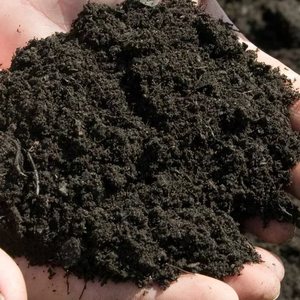
Seedlings require breathable, nutritious soil. Ready-made soil is purchased at garden stores. “Universal mixture”, which has already been processed, is suitable.
If you want to prepare the soil mixture yourself, take turf soil from the garden. Before use, it is disinfected from insect pests and pathogenic fungi in one of the following ways:
- heat on a baking sheet in the oven at +100...+120°C for 10 minutes;
- place in the microwave for 3 minutes;
- steam in a water bath for 40–50 minutes;
- spill with a hot concentrated solution of potassium permanganate (1 g per 1 liter of water).
After sterilization, the earth is mixed in equal quantities with the other components: neutral peat, clean coarse sand, humus. Add 1 tbsp to a bucket of the prepared mixture. wood ash and 20 g of Ammofoska.
Sowing technology
Before sowing, the soil in containers is moistened. White cabbage has small seeds, so the grooves are made shallow - 1–1.5 cm. The grains are laid out at intervals of 2–2.5 cm. The distance between the grooves is maintained at 4-5 cm.
The seeds are covered with an earthen mixture and carefully watered with warm, settled water so as not to wash the seeds out of the ground. The container is covered with transparent plastic film, creating a greenhouse effect, and placed on a windowsill or in a convenient place under phytolamps. The greenhouse is periodically ventilated to prevent mold from forming from condensation.
Optimal conditions for seedlings at home
The recommended air temperature for seed germination is +20...+23°C during the day and +17...+18°C at night. Planting material requires high humidity, so it is covered with film or plastic containers with transparent lids are used.
Attention! If there is a lack of moisture, the coating on coated seeds does not dissolve well, which makes germination difficult.
After the sprouts appear, the containers are placed on a well-lit windowsill or phytolamps are hung above the shoots at a height of 40–45 cm. After removing the film or lid, air humidity is maintained by placing a container of water near the container.
If seedlings are grown on a windowsill, the batteries are covered with foil. At night, open the windows slightly for ventilation. A sufficient amount of light will prevent the sprouts from stretching, and the coolness of the night will harden them.
Further care
Caring for seedlings includes picking seedlings, timely watering, fertilizing and preparing plants for planting in open ground.
Watering
Cabbage is a moisture-loving plant, but excessive watering will destroy young shoots. The seedlings are watered 2 times a week, while making sure that the soil is not excessively wet.
Picking
When growing seedlings in a common container, picking is required. It is performed when a pair of true leaves forms on the plants. Plastic glasses or peat pots with a volume of 200 g are suitable for planting. It is convenient to remove plants from moist soil with a teaspoon or fork. The sprouts are lifted together with a lump of earth and placed in a separate cup, deepened into the soil until the first true leaf.
Attention! When replanting, do not hold the plant by the leaves: they are fragile and easily break off.
To reduce stress, the culture is moistened with an Epin solution from a spray bottle.
Top dressing
If superphosphate and humus have been added to the planting soil, the sprouts do not need additional feeding at first.
If the leaves become pale green and slow in growth, it means they are lacking nutrients. 7-8 days after picking, the plantings are fertilized with complex mineral fertilizers: Agricola, Kemira.
Hardening
At the age of 1.5 months, seedlings begin to harden. To do this, take the containers out onto the balcony and open the window. Plants are gradually accustomed to cool air: they start with 2 hours, increasing the duration every day. Hardening will prepare the seedlings for temperature changes in an open area.
How to grow seedlings without picking
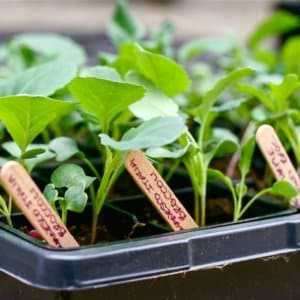
Cabbage usually tolerates transplantation well, but picking still slightly slows down its growth: the crop takes about 6-7 days to resume active development.
You can avoid picking if you plant the seeds immediately in separate containers: 200 g plastic cups, small plastic pots, peat tablets or pots. 2 seeds are planted in each glass, and later the weaker sprout is removed.
Seeds are also germinated in a common spacious box according to the 7x7 pattern. This distance is enough for seedlings to fully develop. To transplant into open ground, carefully lift the sprouts with a spoon containing a lump of earth.
In the snail
Some gardeners practice an original method of growing seedlings - in a snail, which significantly saves space.
To make a snail you will need: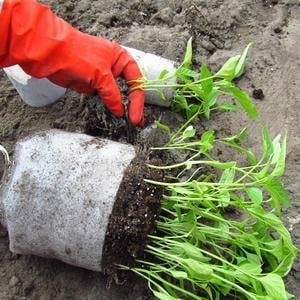
- a transparent low container, preferably round;
- tape 11-12 cm wide, about 1 m long, made of porous soft material (usually a linoleum backing is used);
- elastic band for fixing the cochlea;
- polyethylene film.
The tape is laid out on a horizontal surface, damp soil is poured onto it in a layer of 1 cm and pressed with the palm of your hand. It is better to pour the soil not immediately along the entire length of the tape, but gradually, in small sections.
On the one hand, retreating 2 cm from the edge, spread the seeds at a distance of 4-5 cm, deepening them with your fingers into the soil.The finished plot, 15–20 cm long, is rolled up and the soil continues to be laid, planting seeds in it. Gradually the tape is filled and rolled up to the end.
The resulting structure is secured with an elastic band, turned vertically so that the edge with the seeds is on top, and placed in a container. The coils are watered with warm water and covered with film, leaving a small space between it and the ground.
Attention! After the first shoots appear, the film is removed.
The snail is placed in a warm, bright place. To extract the seedlings, the roll is carefully unwound, and the sprouts themselves are separated from the soil.
Growing seedlings of different types of cabbage
During cultivation white cabbage The central root of the sprout is shortened by 1/4 of the entire length. This stimulates the active development of lateral roots, as a result of which the sprout receives more nutrients from the soil.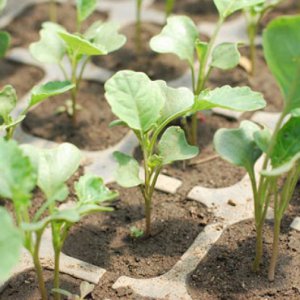
For growing seedlings Brussels sprouts An air temperature of +18…+19°C is sufficient. For better development of the root system, the sprouts are deepened into the ground or topped up with soil.
Broccoli seeds Immediately planted in separate pots, since this type of vegetable does not tolerate picking.
Savoy cabbage seedlings dive into pots with a peat mixture until the first true leaf forms. To form lateral suction roots, the central root is shortened by 1/3 of its length.
Savoy cabbage does not respond well to direct sunlight, so on such days the seedlings are shaded.
When and how to transplant seedlings into the ground
Early and mid-early crop varieties are transferred to open ground in the southern regions at the beginning of May, in the central regions at the end of May, in the Urals and Siberia at the beginning of June. Middle, mid-late and late varieties - from May 15 to early June.
To plant plants in open ground, prepare beds in a well-lit area. The soil is first dug up, and at the same time compost, rotted manure (1 bucket per 1 m²), superphosphate (25 g/m²), and potassium nitrate (15 g/m²) are added.
Important! Planting is carried out in the evening so that the sun's rays do not damage the sprouts.
Cabbage is planted according to the following scheme:
- 35x40 cm - early;
- 40x50 cm - mid-season;
- 55x65 cm - late.
In the prepared area, make holes 20 cm deep and water them with warm water. The seedlings are carefully transferred from the pots along with a lump of earth into the depressions, covered with soil up to the first leaves and the soil is lightly pressed.
For the first 2-3 days, to improve the survival rate, the plants are watered generously and the leaves are sprayed. At night, cover with agrofibre or lutrasil, protecting from low temperatures.
Conclusion
Growing cabbage seedlings at home is not particularly difficult. Comfortable temperatures and humidity for seeds and seedlings are created on window sills or shelves illuminated by phytolamps. With proper care, the plants will be healthy and strong and subsequently produce a good harvest.